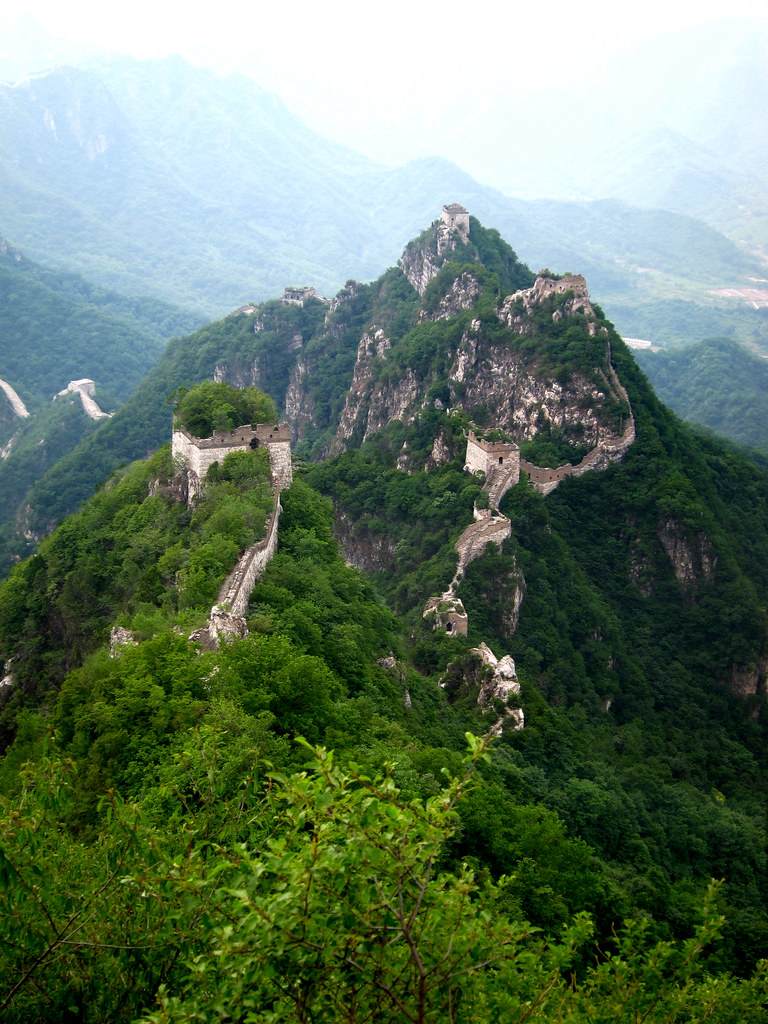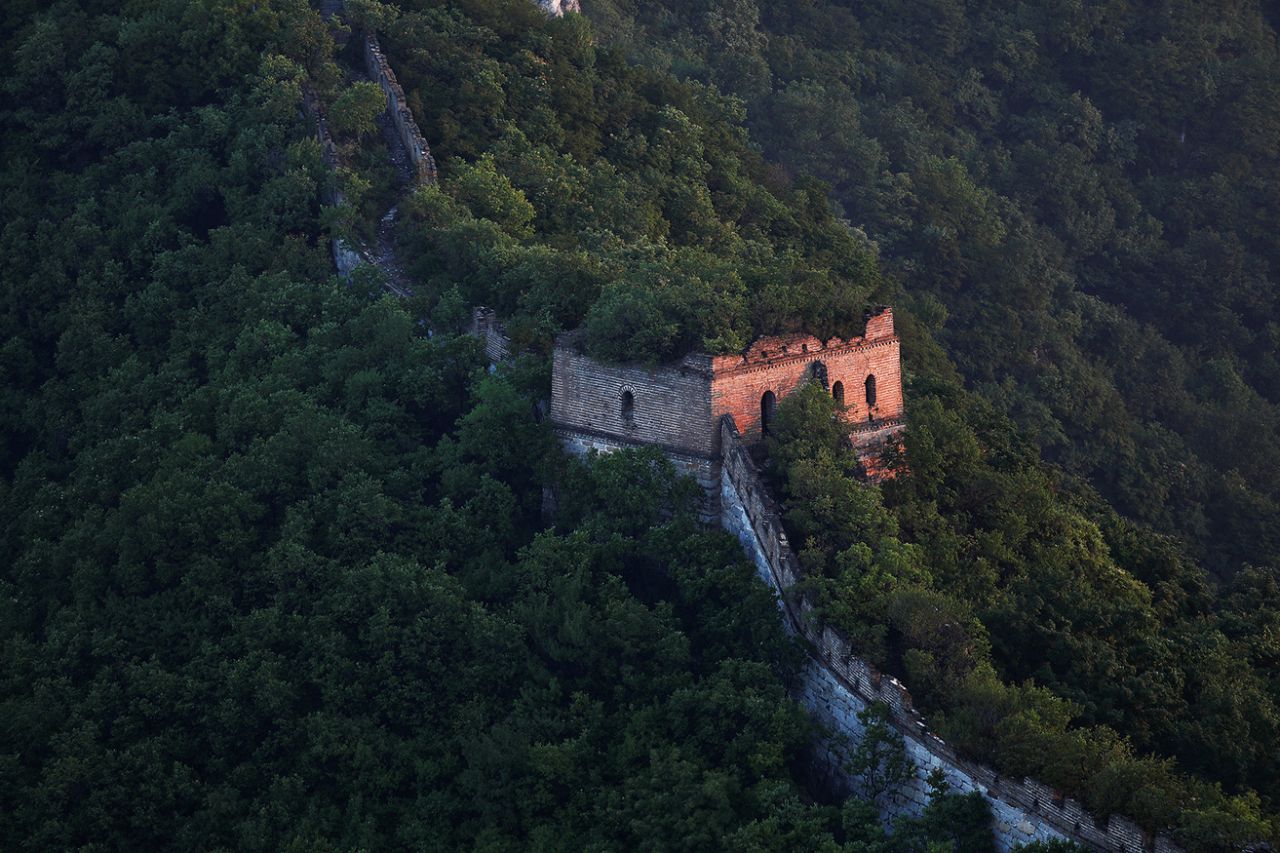Out in the middle of nowhere
Very few tourists come here.
The Jiankou Wall stretches for 20 kilometers over jagged green mountains. From the valley below, it looks like whipped cream painted on each peak.
Located only 100 km north of Beijing, it is completely different from the better-known sections of the wall nearby such as Badaling or Mutianyu.
There are no souvenir shops or Starbucks, no cable cars. No one waiting to sell you tickets. No one there to make your visit easier: to get to this section of the wall, you have to hike 45 minutes up the mountain.
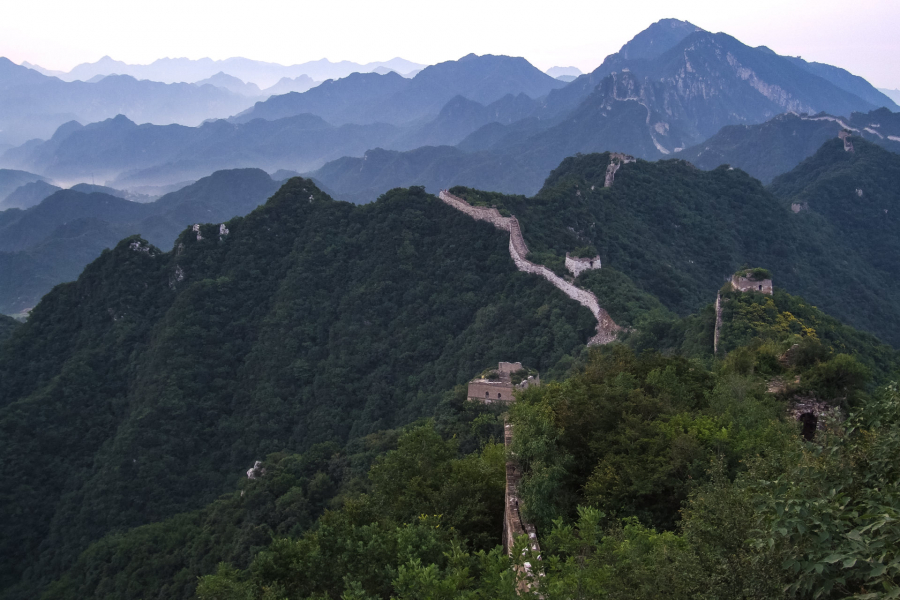
The 20km long Tien Khau wall stretches like a silk strip across the mountain top.
And it was not until recently that it was refurbished.
Built in the 1500s and early 1600s, this section of the wall lay untouched for centuries.
Some 7 km of the wall was particularly badly damaged. Over time, the towers had disintegrated into rubble. Some sections of the wall had collapsed entirely, leaving once-wide sections so narrow that only one person could pass through at a time.
Trees and bushes grew through the ground, making the wall look more like a jungle than a fortification.
The lack of maintenance makes this section of the wall picturesque, but dangerous.
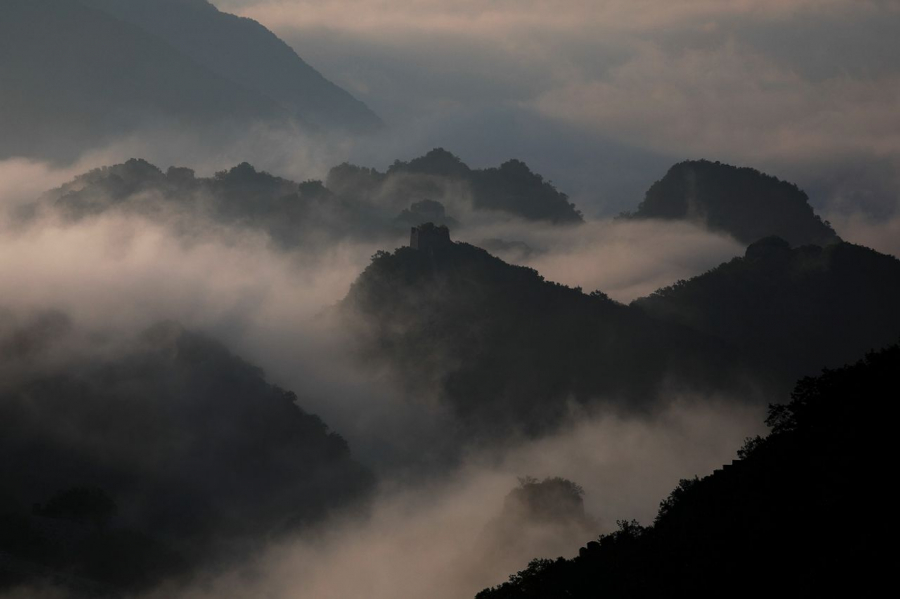
Morning mist in Tien Khau
“Every year, maybe one or two people die climbing this section of the wall,” said Ma Yao, manager of the Great Wall Protection Project at Tencent Charity Foundation, which funded the latest restoration. “Some die from falling. And some die from being struck by lightning.”
To prevent another tragedy – and to preserve the Jiankou section for future generations – restoration began in 2015. This intensive phase, focusing on a 750-meter stretch, was completed in 2019.
“Machines cannot come here. We have to use human power,” Mr. Ma said. “But we should use technology to help workers do their jobs better.”
For the 2019 phase of the project, that technology includes drones, 3D mapping and computer algorithms that can tell engineers whether they need to remove that tree or repair that crack — or whether they can safely leave it as is, a reminder of a wall once left to the elements.
“Technology has helped us repair the wall in the most traditional way possible,” said Mr. Ma.
Human threat
Winding through northern China, from Manchuria to the Gobi Desert to the Yellow Sea, the Great Wall is vast.
Its history is equally epic: it was built over more than 2,000 years, from the 3rd century BC to the 17th century AD, under 16 different dynasties.
The longest and most famous section of the Great Wall belongs to the Ming dynasty, which built (and rebuilt) it from 1368 to 1644, including the Jiankou section.
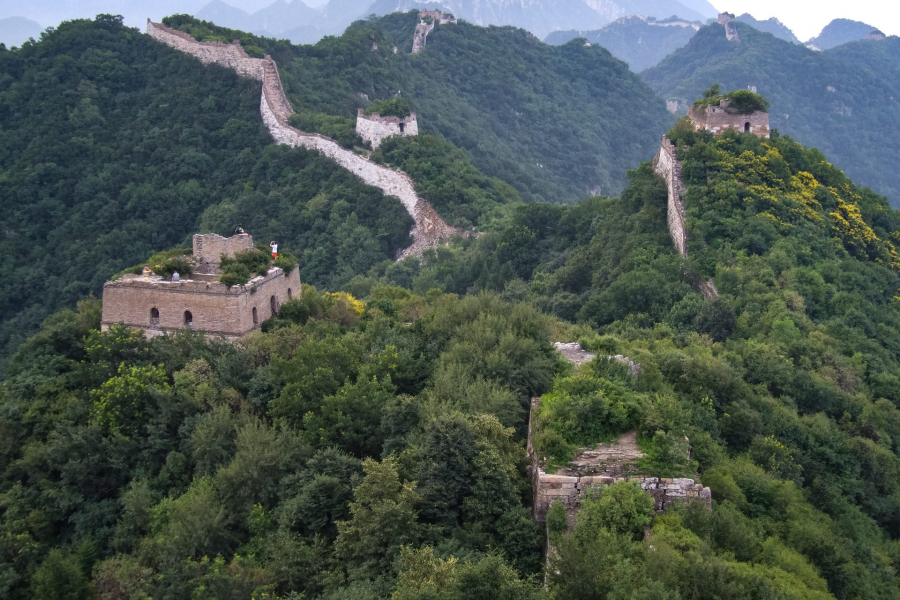
Tourists take photos at Tien Khau
An archaeological survey by the State Administration of Cultural Heritage and the State Bureau of Surveying and Mapping calculated that the Ming Great Wall ran 8,851 km long – including 6,259 km of walls, 359 km of moats, 2,232 km of natural structures and 25,000 watchtowers.
Far from being a straight line from A to B, the wall system included loops, double walls, parallel walls and protrusions.
Today, about a third of the original Ming wall remains. Only about 8% is considered well preserved. There are many threats: natural erosion from wind and rain; human damage from construction; and even people taking bricks to sell. And, of course, there is damage from footfall. This happens even at Jiankou, although this section receives far fewer visitors than sections like Badaling.
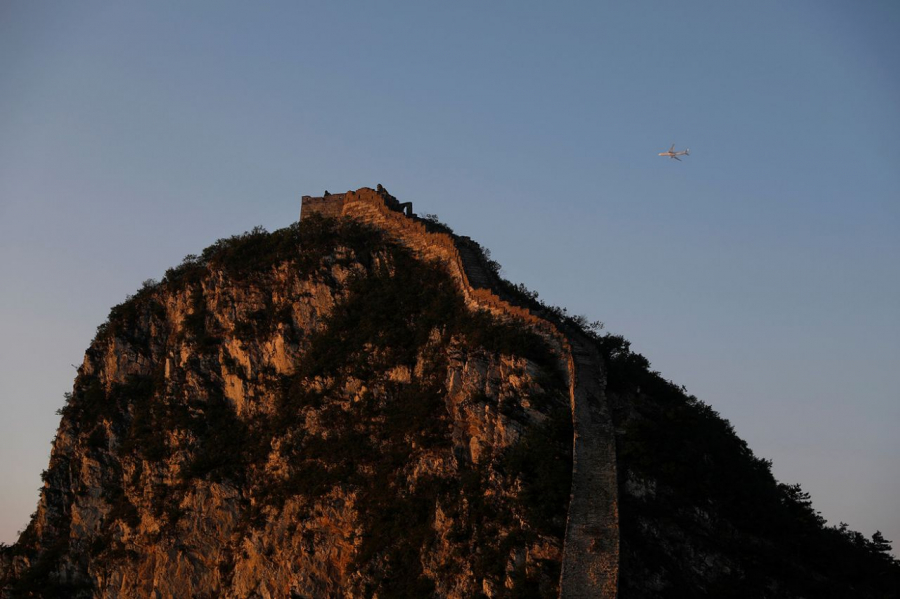
“On the other side of the mountain are 20 million people,” says historian and conservationist William Lindesay, referring to Beijing. “Hence the advice ‘leave nothing but footprints’ – but even footprints can actually damage the wall.”
"Wild Wall"
William Lindesay moved to the foot of Jiankou with his family in 1997 and coined the term “wild wall” to describe the difference between sections like Jiankou and the tourist-reconstructed sections like Badaling. “The wild wall – it’s thousands of kilometers long – really makes up the world’s greatest open-air museum,” he says.
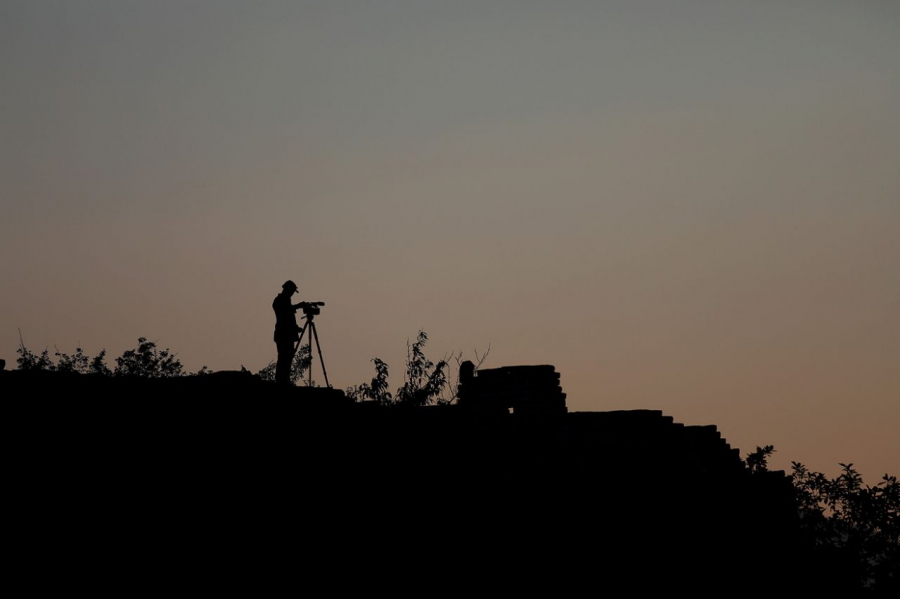
A photographer records the restoration process of Tien Khau
His study is scattered with photographs from his long travels and filled with books about the wall, many written by him.
Among the treasures he has collected during his years of studying the wall are a 16th-century “stone bomb,” hollowed out to hold gunpowder; and a polished crossbow that recreates the type archers fired from the wall in its early days.
In the more than 20 years since moving here, he has witnessed the gradual decline of Tien Khau.
At first, he said, he would have classified this section of wall as well preserved. But not anymore. Where the steps had once been perfect, they were now gouged out by footsteps. Towers were crumbling. Climbing the wall had become more dangerous.
"It's impossible to ban people from the Great Wall. It's almost impossible. So I think the government has no choice but to start rebuilding and stabilizing the wall to make it safe," Lindesay analyzed.
He paused. “I love the wilderness wall,” he said. “But when the number of tourists reaches a certain level, it becomes bad. Then it becomes a tragedy.”
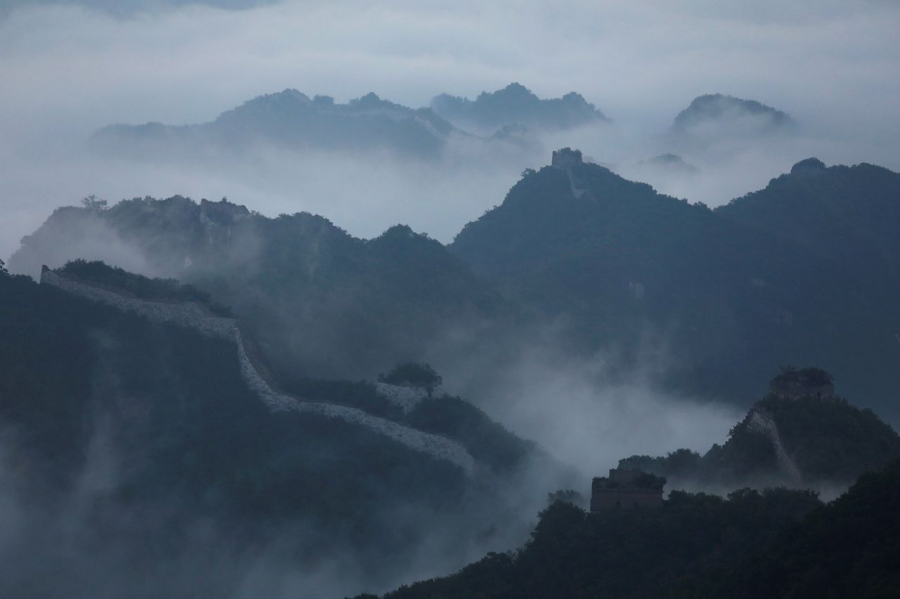
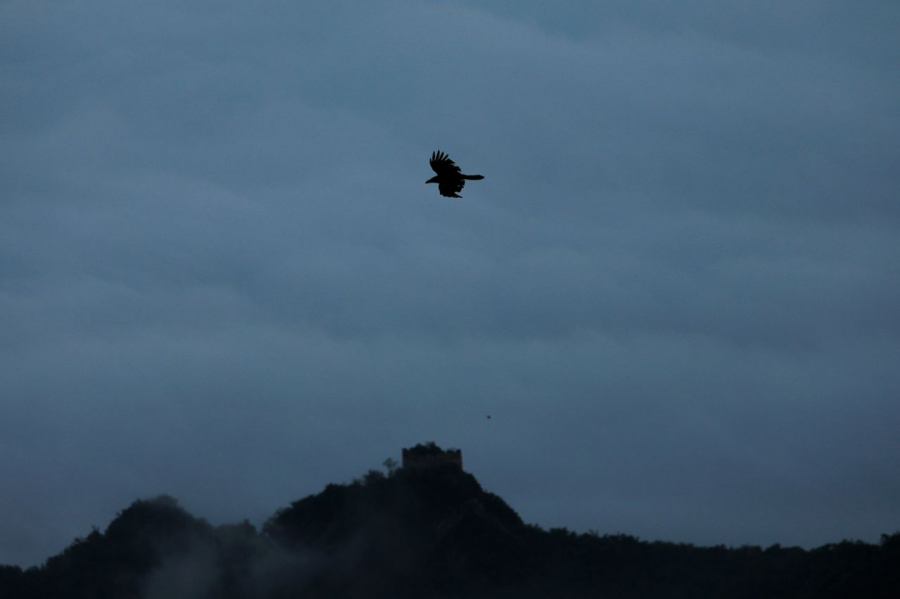
“Chinese civilization belongs to the world and everyone has a responsibility to protect the wall,” one sign reads. “Take nothing but pictures, leave nothing but footprints,” another reads.
Wrong restoration
At the top, the restoration project came into view before the wall itself. Scaffolding rose up before me. After several months, the final phase of the project was nearing its end.
“The wall is the property and heritage of all of us,” said Zhao Peng, the chief designer of the restoration project. “Repairing and protecting it is not simply something we are willing to do, but something we want to do – and it is also a responsibility.”
But restoring a wall can work against its protection. If a place is renovated too much, it can lose its former identity.
Many believe that was the fate of Badaling, the best-known section of the wall. During the overhaul, which began in the 1950s, it was rebuilt with new bricks, held together with modern cement. Today, many areas are covered in graffiti. The reconstruction has been derided as “Disneyfication,” a contemporary reimagining of a past monument.
The restoration of Tien Khau was planned to avoid repeating those mistakes.
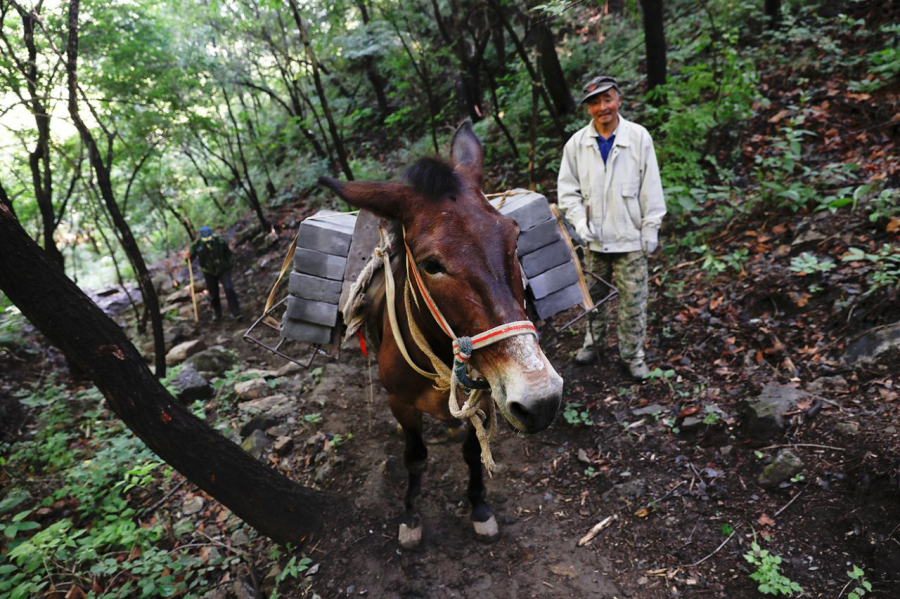

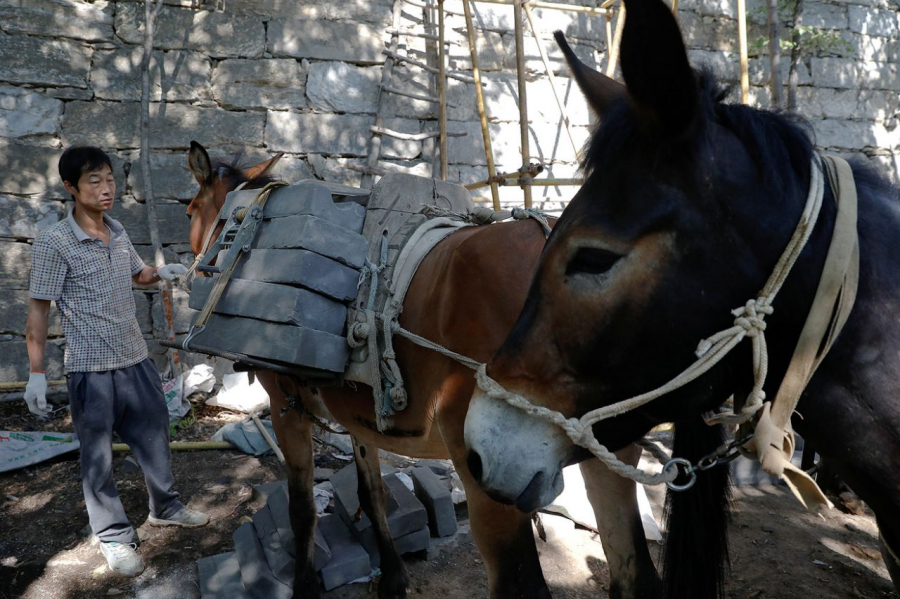
Mules carrying sacks of white ashes to the Tien Khau restoration site
Teams of mules will carry huge bags of white ash to the Jiankou restoration site. Workers will mix the ash into a thick white liquid. There will be no modern concrete here. They will use a trowel to spread mortar onto bricks, carefully setting them into the wall.
The 750-meter section of wall that was the focus of this restoration phase rose up the hill in front of me. A few trees poked through the bricks. It was a far cry from the forest path of Jiankou that had once been there. However, there were still many signs of wild nature.
At another point, the side of the wall had completely collapsed. And at the end of this section, it just stopped: it turned into a slide down the mountain so steep that you couldn't survive climbing it without using ropes or climbing ladders.
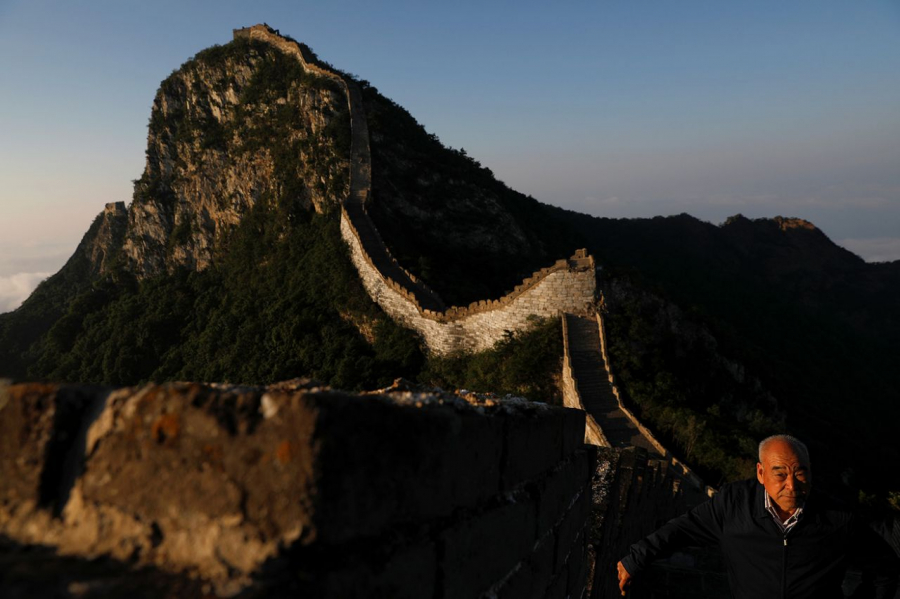
Cheng Yongmao, chief engineer supervising the restoration of Jiankou
Zhao pointed out the various interventions that have been implemented.
Despite Lindesay's concerns about tourist footprints, the single greatest cause of damage to the Jiankou section is water erosion.
In the long term, preserving the wall meant changing the flow of rainwater. The restoration team opened drainage holes and other channels to allow water to flow down.
And in places where water tends to accumulate, they use new bricks that are denser so water cannot penetrate and flatter so water can flow.
The new bricks look significantly different from the old bricks, a way for future generations to tell the difference between the original and the restoration.
"Minimal intervention"
“We have a principle – the principle of minimal intervention,” Zhao said. “But minimal intervention does not mean no intervention at all.”


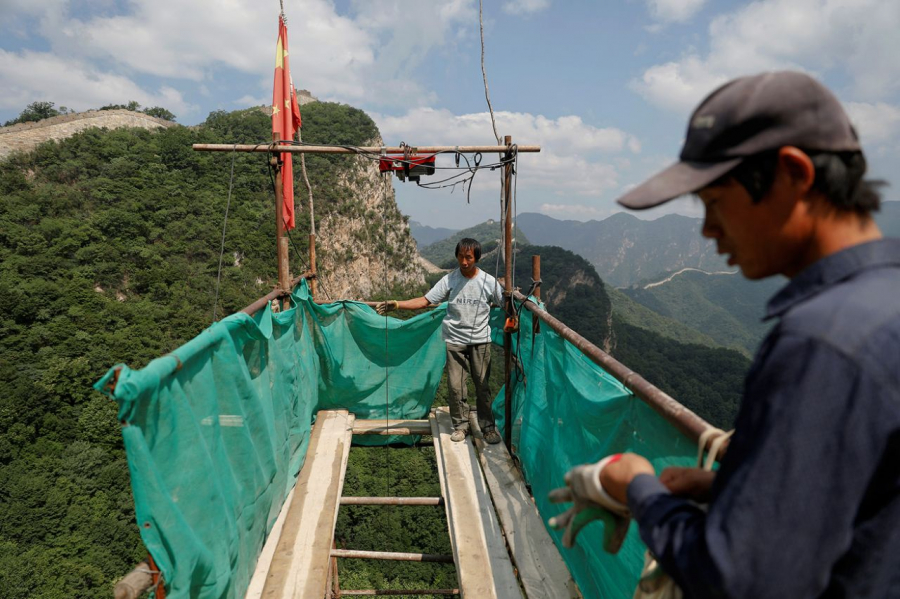
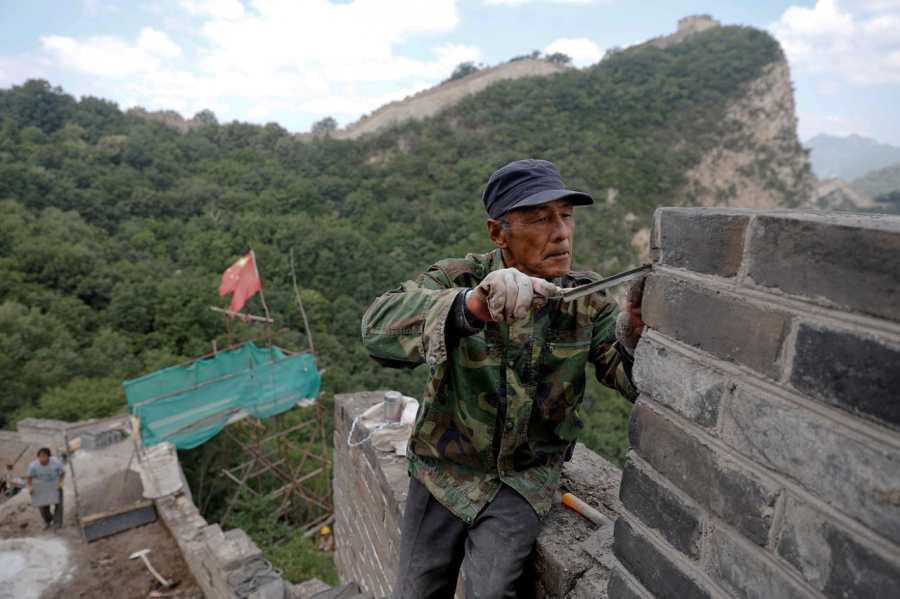
The team working on the Tien Khau project was able to easily reattach the bricks to their original positions.
One way the project minimizes intervention is by using modern technology.
Typically, Zhao explains, designers would inspect and survey the wall in detail and note any weaknesses. Back at the workshop, they would figure out how to address those limitations to preserve the wall for posterity.
This time, they had a new tool to help. In Beijing, the School of Archaeology and Museums at Peking University flew a drone over the wall, taking about 800 photos in half a day. Using the images, they created a 3D model of the wall, down to every brick and crack. To get a complete picture for the restoration, they repeated the process halfway through and again at the end.

3D imaging and the use of algorithms give engineers valuable information about the wall.
“We have done many 3D models and panoramas like this in many different heritage sites in China,” said engineer Shang Jinyu. “But this is the first project where we can use this system as part of a restoration project, combined with other techniques.”
This data helps the design team plan wall repairs with minimal intervention.
Take, for example, a crack in one of the watchtowers. “This crack is very difficult to check with the naked eye,” Zhao said. “By using a drone, taking pictures and then digitizing the data, we will be able to determine the size of the crack, the degree of tilt of the wall. Then we will be able to decide how stable that section of the wall is.”
The data also provides a clear record of each stage of the restoration. “The main purpose of this 3D model is to track the entire repair process,” Ma explains.

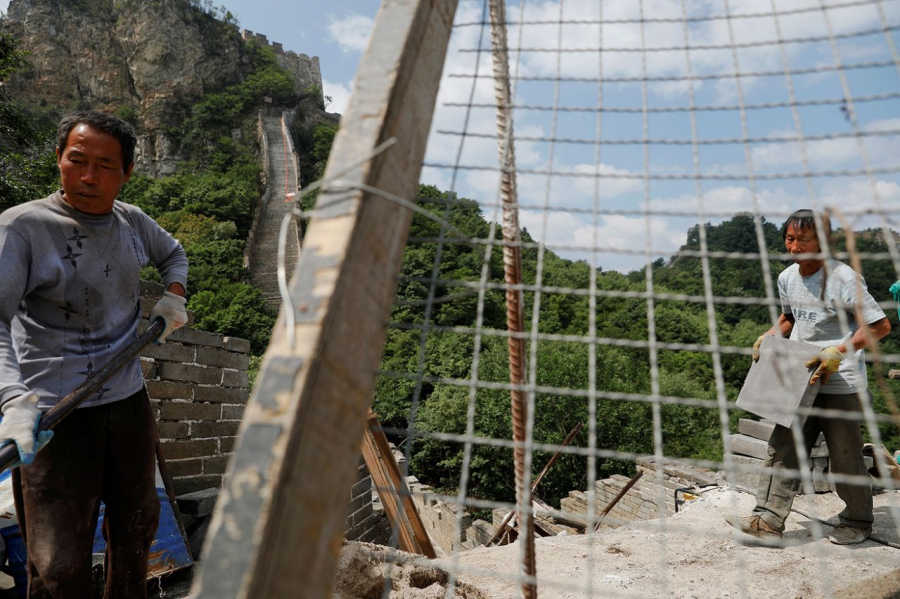
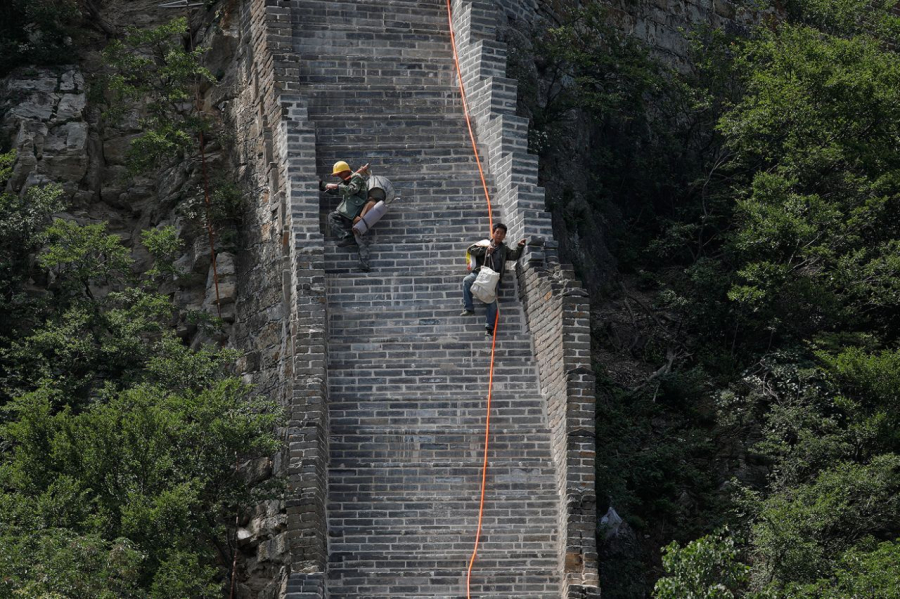
Every day, workers have to walk up the mountain and do physically demanding work at the restoration site.
Another example is one of the watchtowers, which was overgrown with trees. The tree roots were cut to keep the tower from being damaged. To remove the tree, the crew had to remove some of the bricks.
In the past, it was difficult to replace tiles exactly in the right place. Now, they can replace the original tiles quite exactly in the old place.
“They fixed the top of that tower, but it looks like it's been standing there for hundreds of years,” Ma said.

Some sections of the Jiankou citadel wall have been kept in their natural state of decay during the restoration process.
Interestingly, the team from Peking University is not the only one to come up with this idea.
Computer and technology giant Intel has come up with its own 3D model – its drone took 10,000 photos – and shared its version with the China Cultural Heritage Conservation Foundation, which is also involved in the restoration project.
Now, the teams are putting their knowledge to use in the next phase: restoring another section of the wall.
"It's the Xifengkou section, about 300 kilometers from Jiankou," Ma said. "This section is about 900 meters long. Some parts of it are underwater."
"Like at Tien Khau, we used 3D modeling. And based on the experience of restoring the Tien Khau section, the team adjusted some parts of their plan based on the results of the 3D modeling."

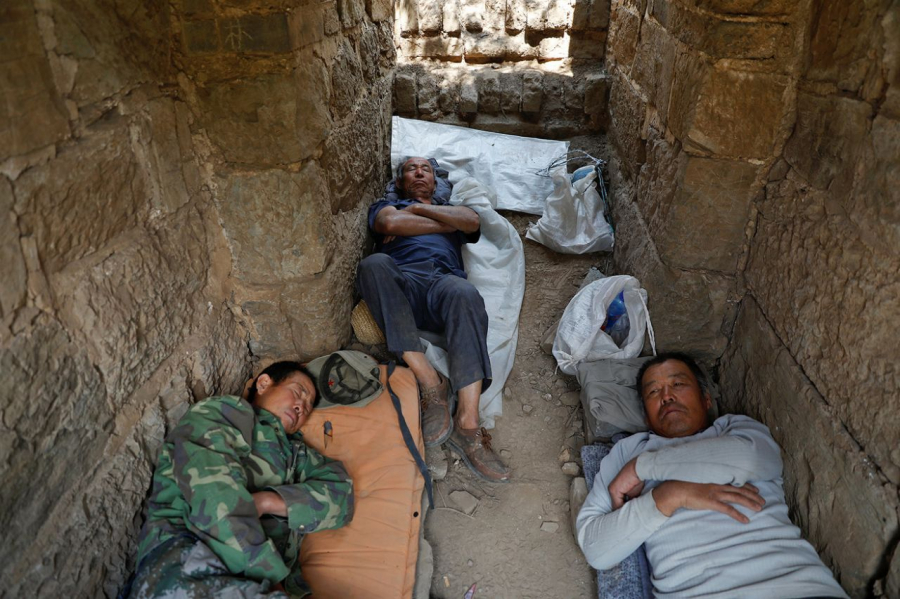
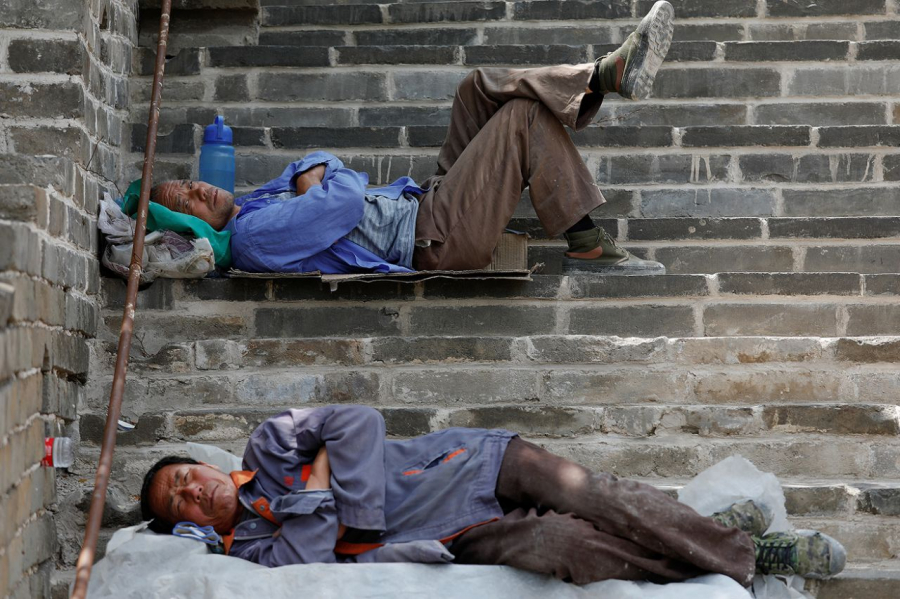
Under the shadow of one of the towers, workers slept.
Workers sleep in the shadow of one of the towers. Their days begin with a sunrise climb. While drones and 3D modeling may have helped their design team, they cannot replace manual labor with chisels and hammers.
Once the renovations are complete, perhaps this quiet will be gone. Perhaps the "No Visitors" signs will be gone too. Fewer people will be afraid of the "wild wall". More and more visitors will come, not just the bravest.
The wall may be less crumbling and less dangerous than before. But it remains a striking reminder of the centuries that shaped not just the wall, but China itself. And its soul, if walls have souls, still whispers of the wilderness.





